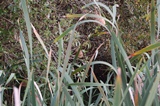PHOWN summaries and recordsVirtual Museum View records in Virtual Museum formatCoverage map for all species Species totals, Nest stats per species and Observer totals Species summary , or General query Observer records, or View VM record Photo of the week, or PHOWN repeats, or PHOWN priorities |
PHOWN record summary
|
Enter new vm record to see a different record and hit 'Go'.
|
Species allocated by Coordinator: Record details entered by participant: (see all records here for this participant) Google map for this record (zoom in and switch to satellite view)
Photos uploaded by observer



Large photos
803, Southern Masked Weaver Ploceus velatus (see species summary here)Record status ACCEPTED Vm 1058 [on-line data upload (2011-08-18): 8115] Species Southern Masked-Weaver Observer(s) Culver B Country, town, locus South Africa, Northern Cape, Kimberley,
2824DCLocality Hillcrest and El Toro Park Latitude, longitude -28.7605959620214, 24.7396284341812 [5 m accuracy] Date 2011/8/18 Notes Four years ago we placed an old Southern Masked-weaver nest in the Fever Tree in our back yard in Kimberley hoping to attract a breeding male. Three weeks later we saw the remnants of the nest lying on the ground and thought that the wind had blown it apart. The next day, to our delight, we noticed the beginnings of a new nest. The month was October 2007. That season the bird built 13 nests and we noticed 2 females were being courted. The male must have been a young one as he was not very successful with his efforts. We also did not notice whether any chicks were forthcoming.
Zooma, as we named him the next season for obvious reasons, hung around during the winter of 2008 and started again in August with four females . We counted 17 new nests that Summer and definitely observed at least four chicks and one which fell out of its nest during some strong wind. One of the other chicks seemed to have left the nest too early and did not survive. 2009 and 2010 were basically a repeat of 2008 and we counted 21 and 25 new nests respectively, making a total of 76 in four seasons.
As usual , Zooma moulted into his drab feathers in April of this year. He has, however, decided that he needs to work harder at his reproduction skills and by the middle of June was in full colour again and building nests. He has built 11 new nests to date (18 August) this season and we have counted 3 females. Is this a common trait in the cold Northern Cape or is it highly unusual?.
Nest count 11 Nest site tree
To see this map with all other PHOWN records, click here. Note that the map on this page will load very slowly and probably will only work if you use Chrome as a browser.
History of repeat colony counts
Note: repeats from the same day are not shown.vm Species code Date Nests Notes 1058 803 18/8/2011 11 Four years ago we placed an old Southern Masked-weaver nest in the Fever Tree in our back yard in Kimberley hoping to attract a breeding male. Three weeks later we saw the remnants of the nest lying on the ground and thought that the wind had blown it apart. The next day, to our delight, we noticed the beginnings of a new nest. The month was October 2007. That season the bird built 13 nests and we noticed 2 females were being courted. The male must have been a young one as he was not very successful with his efforts. We also did not notice whether any chicks were forthcoming.
Zooma, as we named him the next season for obvious reasons, hung around during the winter of 2008 and started again in August with four females . We counted 17 new nests that Summer and definitely observed at least four chicks and one which fell out of its nest during some strong wind. One of the other chicks seemed to have left the nest too early and did not survive. 2009 and 2010 were basically a repeat of 2008 and we counted 21 and 25 new nests respectively, making a total of 76 in four seasons.
As usual , Zooma moulted into his drab feathers in April of this year. He has, however, decided that he needs to work harder at his reproduction skills and by the middle of June was in full colour again and building nests. He has built 11 new nests to date (18 August) this season and we have counted 3 females. Is this a common trait in the cold Northern Cape or is it highly unusual?.

Vm 1058










